The Chester Beatty Library is a museum of rare books and manuscripts located in Dublin, Ireland. It contains the most spectacular collection of book arts I have ever seen anywhere! The insanely high quality of the art here makes it well worth a spot on any art lover’s Dublin itinerary.
Hey everybody! I’m just reminding you that everything in a museum is subject to change – exhibitions, artworks on display, opening times, and prices. I can only tell you what the museum was like the last time I was there, which might not stay the same. It’s not only that exhibitions change and prices increase; I’ve revisited museums and found their fundamental personalities to be really different from my last visit (or that half their galleries are closed for renovation). I know how sad a disappointing museum visit can be, so I’m reminding you to check everything out on the museum’s website ahead of time.

Sir Alfred Chester Beatty
Sir Alfred Chester Beatty (1875-1968) was a New Yorker who made a fortune in the mining industry. Like many Gilded Age titans, he also became a great art collector. He moved to London and was a wartime adviser to Winston Churchill (which is how he got his knighthood) before moving to Ireland in late life. There, he established his museum and left his library collection to the Irish people after his death. He and his wife also collected paintings that they left to the National Gallery of Ireland. You can learn more about Chester Beatty by watching the video on this page.
The Library
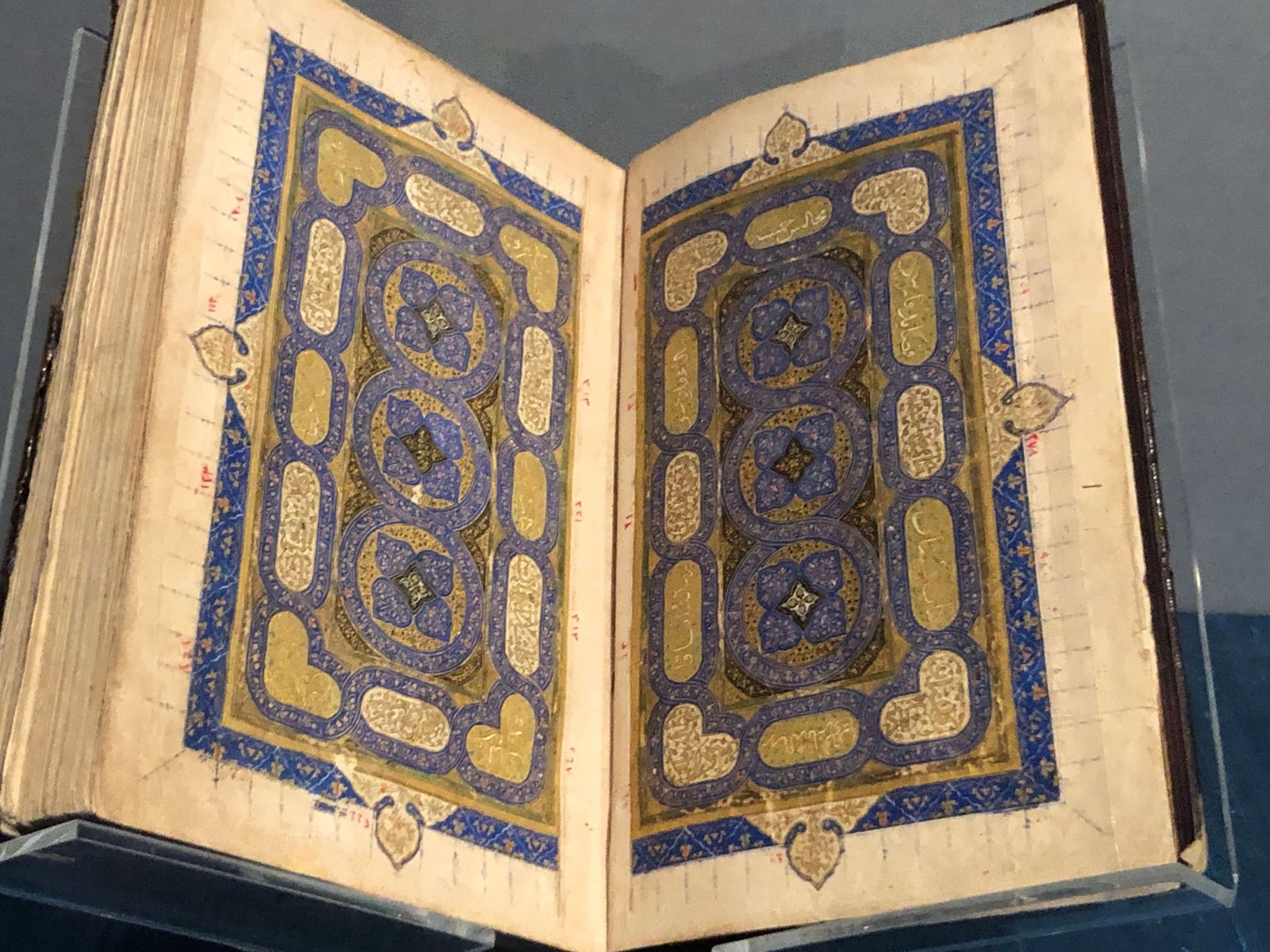
The Chester Beatty Library includes works from Europe, Asia, and the Islamic world from ancient times to the twentieth century. What unites them is that, with a few exceptions, the objects all involve the written word in its various forms – cuneiform tablets, illuminated manuscripts, printed books, illustrations, religious scrolls, and even inscribed jade tablets. This isn’t a unique focus for a museum, but I do believe that it’s done better here than anywhere else. For one thing, the objects are spectacular. For another, the museum does a wonderful job in curation and display – both presenting manuscripts in a way that’s easy to view closely and explaining the information you need to appreciate them.
During my visit, there were two main exhibition spaces open, plus a special exhibition. The first-floor exhibition discussed book and manuscript production by region, explaining things like binding, materials, and calligraphy. The works here were the most visually spectacular in the whole museum, particularly in the Islamic section, which I think was the strongest part of the collection. It includes both sacred and secular manuscripts – some dazzling Qur’ans as well as Persian and Indian manuscript paintings, among other things. This gallery also features some wonderful Chinese texts carved onto jade tablets in gold lettering. I had never seen anything like them before.

The second-floor galleries focused on the connection between writing and religion, using the objects to explain elements of many major world religions. There was some pretty incredible stuff here, too. The highlight is a collection of a collection of 3rd century CE Greek papyri containing the Old and New Testaments and letters of Saint Paul. These are some of the oldest surviving Biblical texts yet to be found. To be sure, they’re not much to look at visually, but their significance still makes them incredibly cool to experience. I also enjoyed the early Christian illuminated manuscripts in Armenian and Syriac and the selection of Buddhist texts and images in gold ink on black paper.
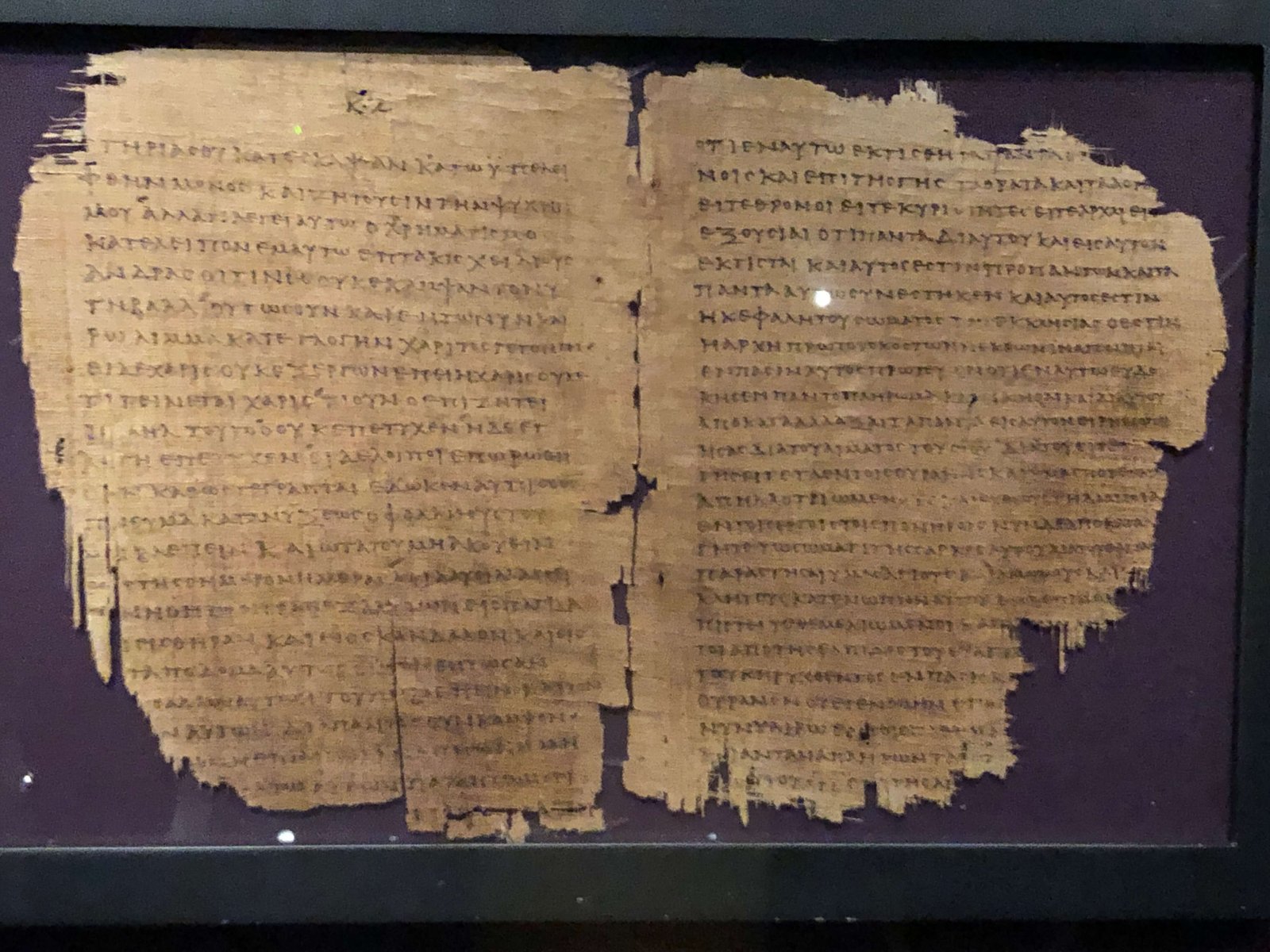
Additionally, a special exhibition displayed pages from the Hamilton Field Hours, a French medieval book of hours notable for its extensive and detailed botanical borders as well as its elegant illustrations. This exhibition is open through September 22, 2024.

In my understanding, the library only displays a small portion of its collection and rotates its displays fairly regularly. (Since these objects are particularly sensitive to light, this makes good sense.) What you’ll see during your visit may not be the same as what I saw, and many of the objects in the highlights book I purchased in the gift shop weren’t on display during my visit.
Atmosphere
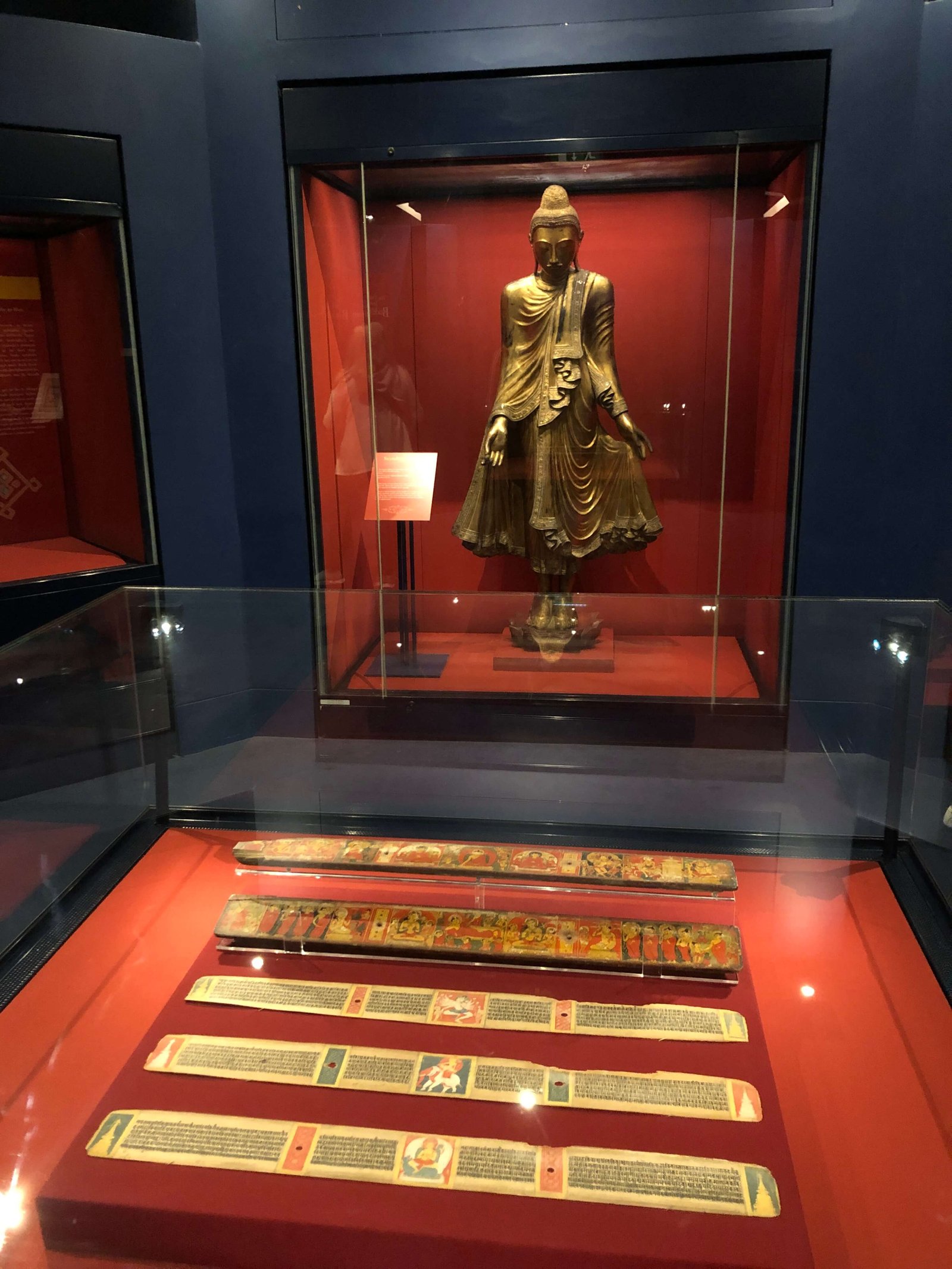
This museum is calm, elegant, and inviting. It’s the kind of place you want to stay for a while. The entry foyer, stairwell, and cafe area are light and airy thanks to all-glass walls, while the exhibition spaces are dark and enclosed to protect the works, but still welcoming. The atmosphere is tranquil, and there weren’t a ton of other viewers during my Tuesday mid-morning visit.
The building is modest in size, and the number of objects on display is not particularly large. However, given the intricacy of these objects and the fact that you have to look closely at manuscripts to appreciate them, there is plenty to see. Any more content, and the experience would have been overwhelming.
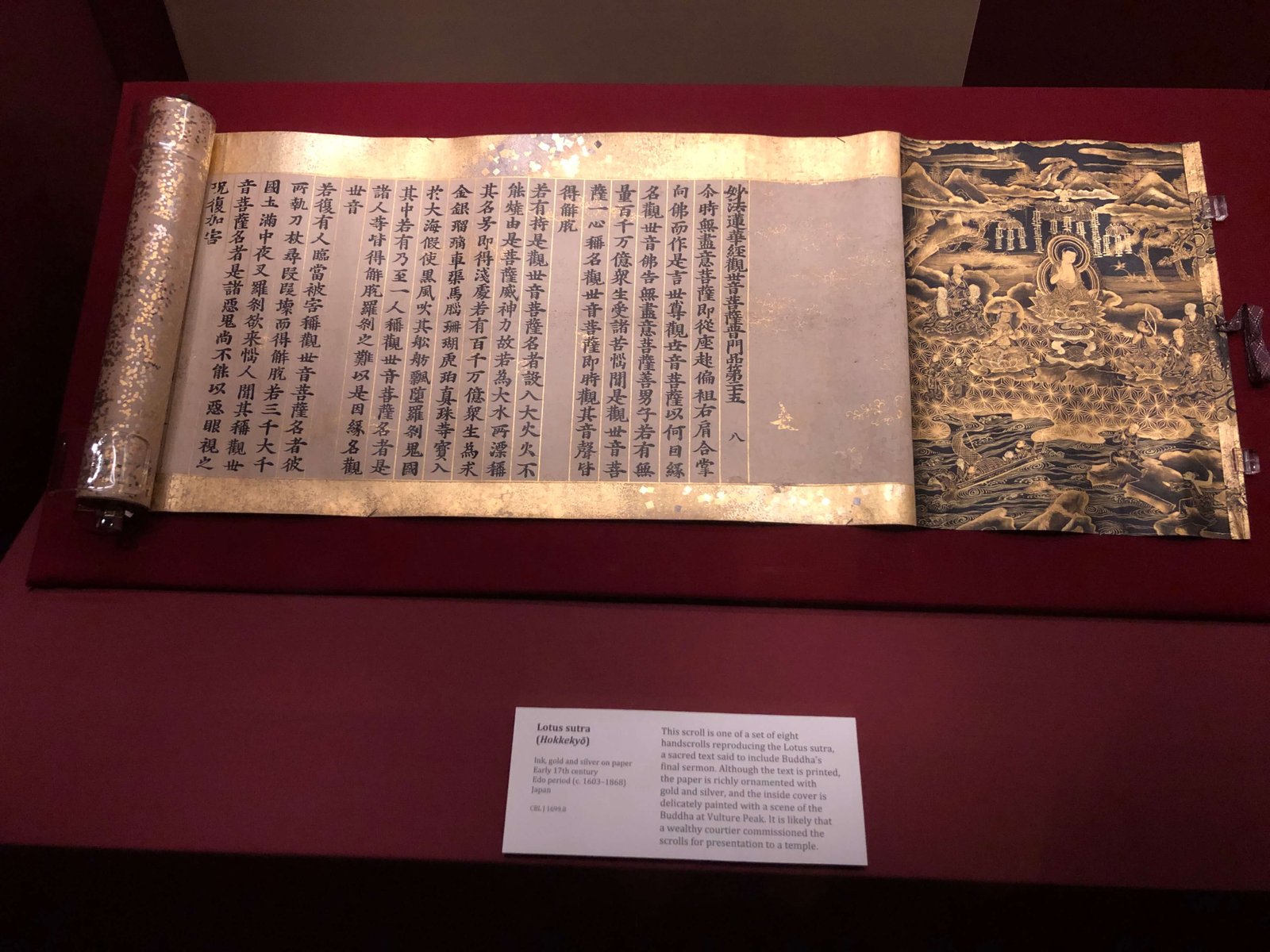
I had about 2.5 hours to spend here, which allowed me to see all the displays at least briefly. And even by the end of that, I was merely glancing at artworks that would have been the highlight of my day anywhere else, just because there was so much of such high quality to absorb. I would suggest allowing yourself a little more time that I did. This is definitely a museum where I would recommend seeing some stuff, taking a break for a coffee or something, and then going back refreshed to see more or look at certain things again.
There is a small, well-stocked gift shop with a classy selection of books (unsurprisingly) and gifts. The cafe looked lovely, and there’s also a rooftop garden.
Practicalities
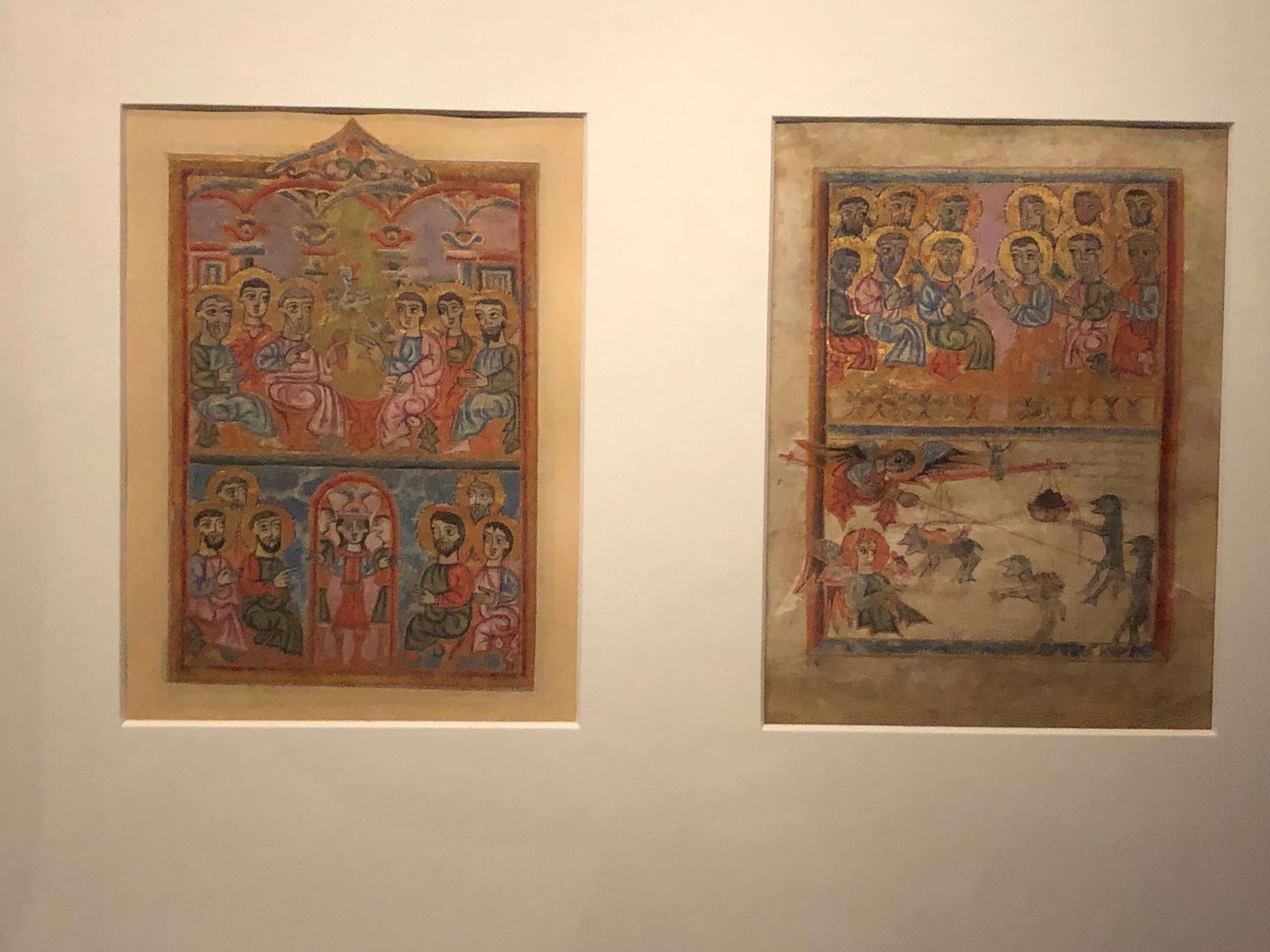
The Chester Beatty Library is located on the grounds of Dublin Castle, but it has its own separate building. Admission is totally free, but as seems to be the case with many museums in Dublin, there are donation boxes asking for a suggested amount (in this case €10). You can download the free Chester Beatty Library app to get a map and some audio guides. There are also plenty of informative wall texts in both English and Irish.


